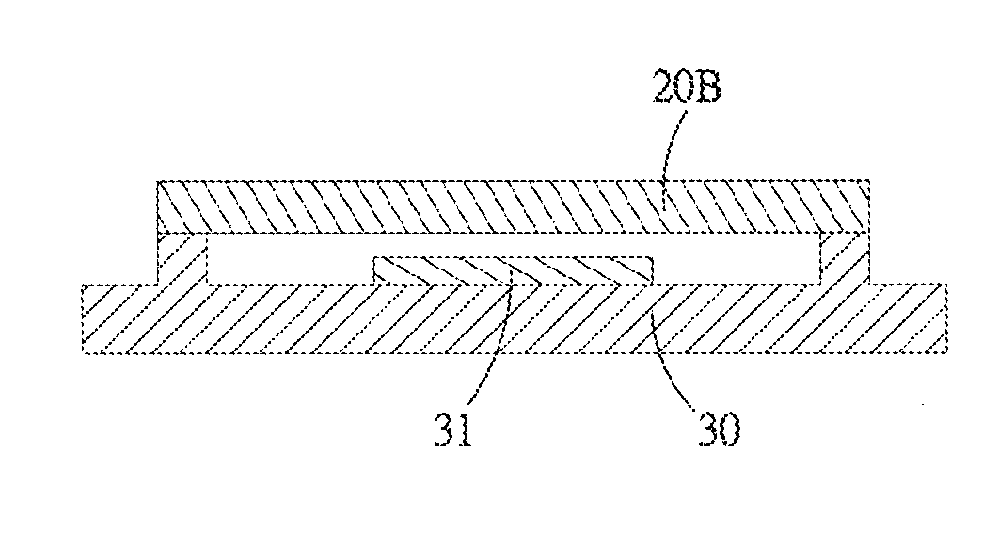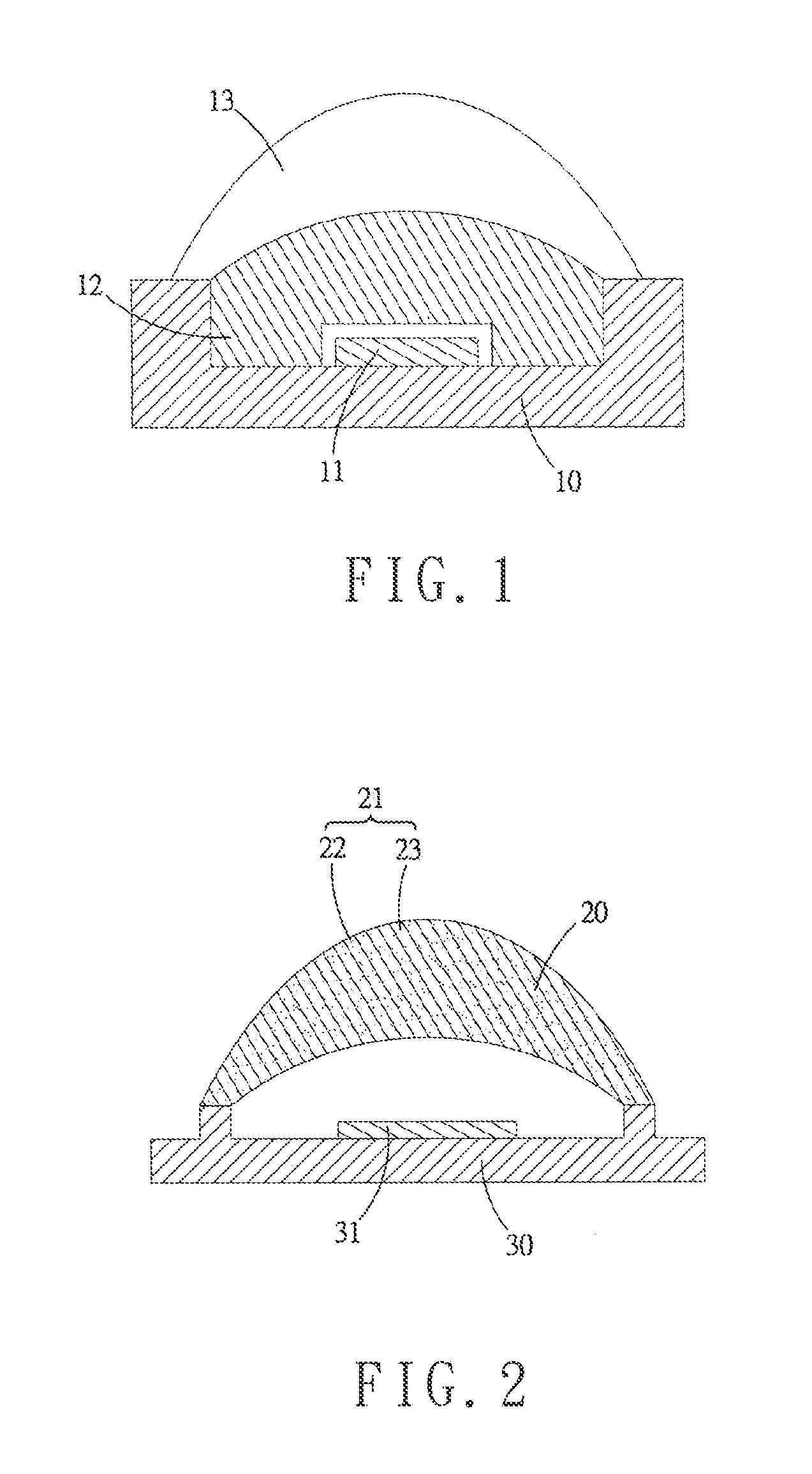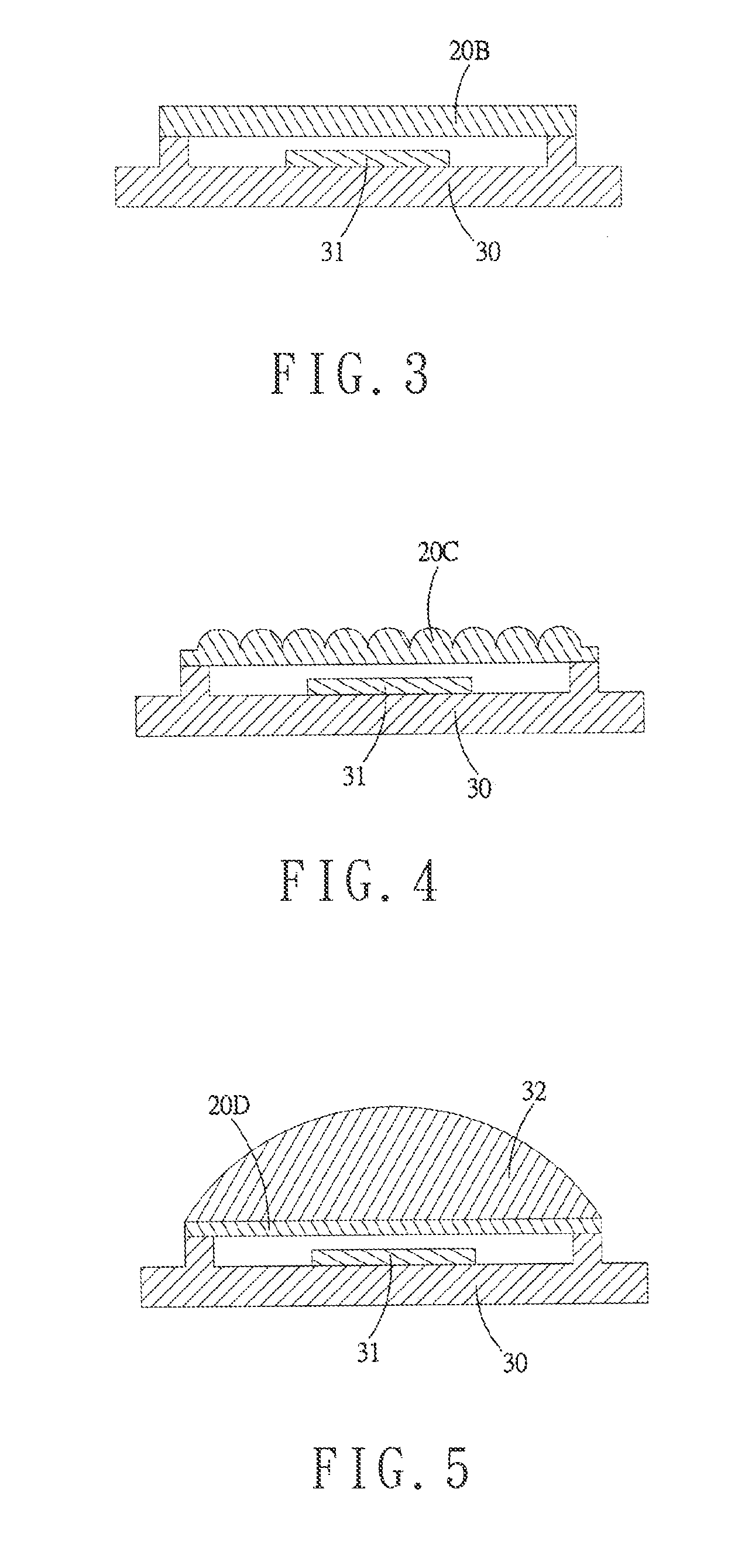Method for producing a low temperature glass phosphor lens and a lens produced by the same
a technology of glass phosphor and low temperature, applied in the field of lenses, can solve the problems of affecting the service life, the light emitting efficiency and stability, and the rapid deterioration of the lens, and achieving the effect of improving the lumen loss, and reducing the cost of production
- Summary
- Abstract
- Description
- Claims
- Application Information
AI Technical Summary
Benefits of technology
Problems solved by technology
Method used
Image
Examples
Embodiment Construction
[0026]A method for producing a low temperature glass phosphor lens and a lens 20 produced by the method will now be set forth in connection with the accompanying drawings wherein like elements are designated by like reference numbers.
[0027]With reference to FIG. 2, the lens 20 is formed by a glass phosphor 21. The glass phosphor 21 is formed by sintering a glass material 22 and fluorescent powder 23. The fluorescent powder 23 is a fluorescent material selected from the group consisting of yttrium aluminum garnet (YAG), nitride, and silicate. The glass material 22 is selected from the group consisting of a silicate system, a phosphor system, a borate system, and a tellurate system.
[0028]Diffusion can be reduced when the stable crystalline structure of the fluorescent powder including yttrium aluminum garnet is sintered together with amorphous soda glass, maintaining good optical characteristics. Furthermrore, addition of nitride and silicate increases the color rendering index (Ra). ...
PUM
| Property | Measurement | Unit |
|---|---|---|
| diameter | aaaaa | aaaaa |
| temperature | aaaaa | aaaaa |
| temperature | aaaaa | aaaaa |
Abstract
Description
Claims
Application Information
 Login to View More
Login to View More - R&D
- Intellectual Property
- Life Sciences
- Materials
- Tech Scout
- Unparalleled Data Quality
- Higher Quality Content
- 60% Fewer Hallucinations
Browse by: Latest US Patents, China's latest patents, Technical Efficacy Thesaurus, Application Domain, Technology Topic, Popular Technical Reports.
© 2025 PatSnap. All rights reserved.Legal|Privacy policy|Modern Slavery Act Transparency Statement|Sitemap|About US| Contact US: help@patsnap.com



